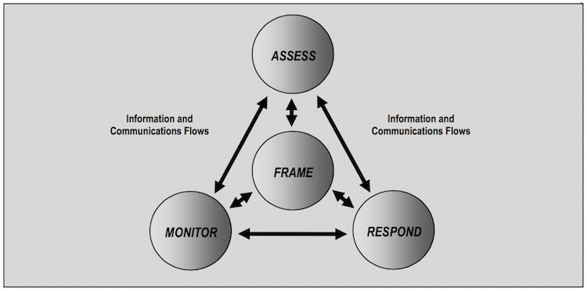
Every organization has some level of risk that can impact the organization. Regardless of whether you have a formal quality management system or must meet regimented regulations, leadership, as well as additional stakeholders, have a particularly vested interest in identifying and planning for all potential risks to an organization. The National Institute of Standards and Technology (NIST) has created a guide for conducting risk assessments. Regardless of the technology, the establishment of a standard approach is key.
Consideration of technology solutions as well as good business practice solutions will form a top tier risk mitigation strategy. Regardless of whether this is a physical system or digital system the methods to mitigate risk are similar:

Technology: Virtual Reality (VR)
Occupational Safety and Health (OSHA), the military, finance and sociology have classically used a series of profile questionnaires prior to and after any risk-taking event. The bias associated with the classic questionnaire approach can lead to a general under-representation of preparedness when facing the risk-taking event.
However, through the use of Virtual Reality (VR), a series of scenarios can be presented to the trainee allowing for a more realistic response. Frontiers in Psychology performed an assessment that considered the trainee and the propensity of risk-taking behavior.
Technology: Digital Twin
Creation of a model that provides digital feedback of an entity provides an opportunity to evaluate a system through simulation. The digital twin can be used to simulate risk in the virtual world through test and evaluation. The military standard MIL-E-7016F provides an example of evaluation of AC and DC bus load current on the electrical systems in aircraft. The digital twin will simulate a load and demonstrate the effects of the connections all essential systems to minimize the load on the electrical system. This method allows for testing in development prior to any financial outlay of raw materials, testing in manufacturing, and product improvement or risk reduction of higher risk systems.
Technology: Augmented Reality (AR)
The Cosumnes Services District Fire Department (CSDFD) Augmented Reality Emergency Response System is a series of SMART tools and methods to allow first responders to become immersed in situations that allow the participant the opportunity to evaluate an emergency situation and respond. As this is a training method, the augmented reality tracks positioning and activity.
Training and competence for a safety related response in an emergency is an after a fact response. However, augmented reality allows for customization in developing risk mitigation strategy for high risk concerns before an emergency. Chemical facilities, manufacturing facilities or even service industries are best suited with actual simulated events to make the errors before it counts.
Processes: Risk Consideration in system
Technology provides significant advantages in doing more with less. However, in creating more value, the tools and systems earmarked for the improvement may generate a potential risk. Consider the Internet of Things (IoT) devices. These tools provide the ability to connect dissimilar devices and tools to a vast infrastructure of computer networks, shared databases, and basic signaling between them. However, the risk associated with specifying, purchasing and installing these devices can create a risk rather than alleviating a risk. Baseline specifications should consider security protocols or consider baseline testing of IoT devices as part of the product development. Sources used to test devices should consider the Open Web Application Security Project that evaluates the top ten vulnerabilities of the IoT architecture.
The Illinois Manufacturing Helpline has experts ready to address your questions and concerns.




